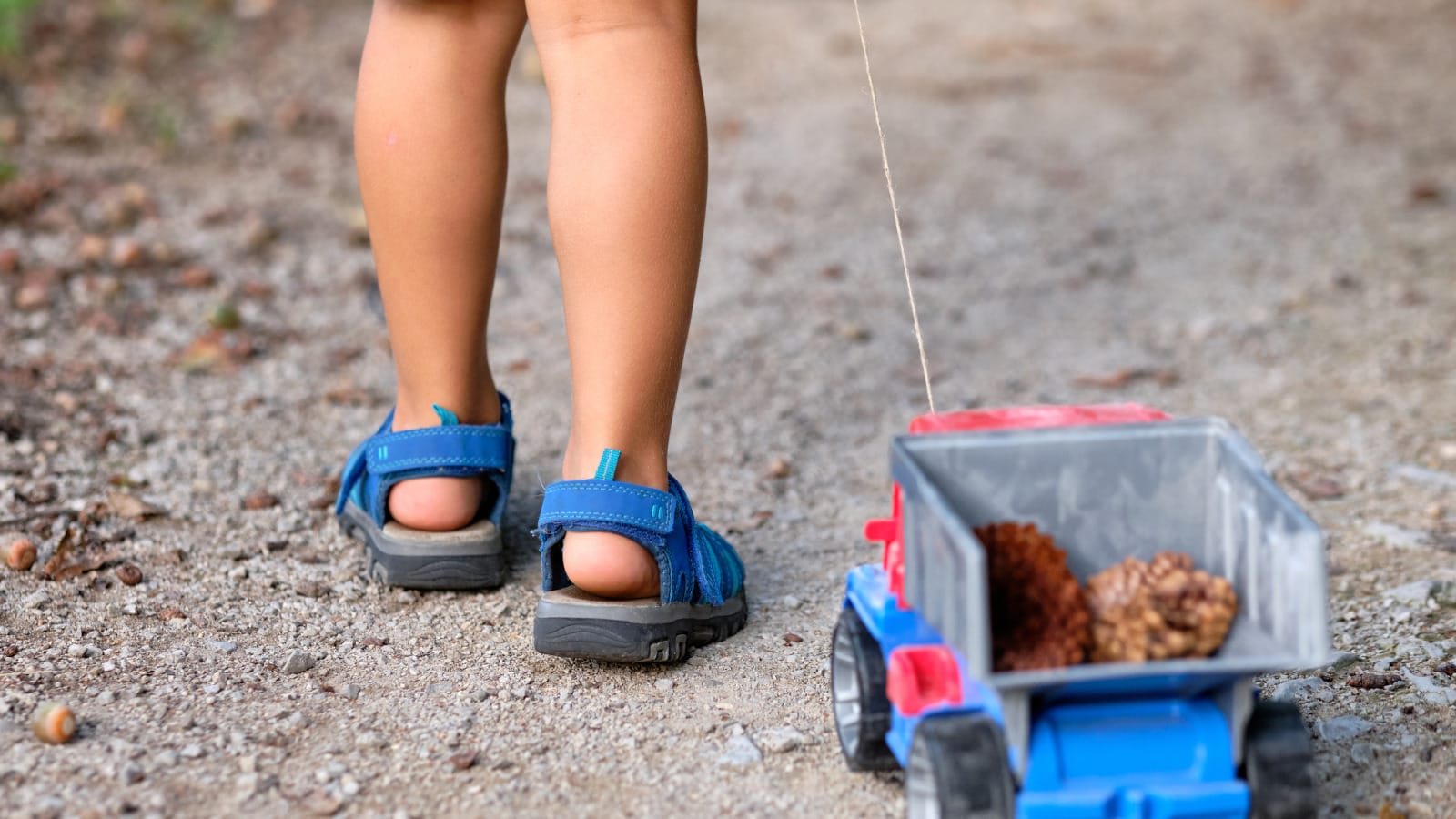If you try this activity with your students, we’d love to see what you do. Share your journey via the #Inspired2Learn hashtag on your preferred social platform.
Discipline: Applicable in all subjects.
Age level: PreK-2nd
Time: 15 minutes.
Materials: Small-medium manipulatives (pom poms, balloons, balls) Optional: landing spot “cargo bin”
Created by: Candace Spencer, PreK 3 Teacher at Garrison Elementary, Washington, DC
Candace Spencer’s class studied all sorts of transportation last year. The students were so interested in all things trains, cars and planes. This activity captures that interest in moving vehicles and invites play as students use their own bodies to demonstrate modes of transit, practice counting, and build fine motor skills.

What to do:
This activity is similar to “Mother may I?” in that in involves asking questions to determine when and how to move forward. Children pretend to be a vehicle tasked with delivering cargo (ball, bean bag or balloon) across the playing area (carpet or outside).
How to play Moving Cargo:
- Each child chooses a cargo vehicle from a list of land/air/or water options. Here are examples:
- Land: Semi-Truck / Train / Moving Van / Flatbed Truck
- Water: Cargo Ship / Submarine / Water Taxi / Tug Boat
- Air: Cargo Plane / Helicopter
- Each child chooses a piece of cargo to carry. Depending on their mode of transportation they will carry the objects differently:
- Land: Use Feet
- Water: Elbows
- Air: Head
- Children line up shoulder to shoulder about a foot apart on one end of an open space – space of at least 10 feet to travel to the “finish” or “delivery” line is ideal.
- One child (or the teacher) plays the foreman and stands in front of the other players.
- One by one, each student asks the foreman, “Foreman, may I take my cargo (number) (vehicle) steps forward?” Ex. “Foreman, may I take my cargo 3 giant dump truck steps forward?”
- The foreman responds “Yes, you may.” Or, “No but you may take it (number) (vehicle) steps forward.” Ex. “No, but you may take it 3 tiny dump truck steps forward.”
- The activity is finished when all the cargo is delivered and all vehicles are parked.
Variations:
- This activity can build on knowledge as students learn about different modes of transit. One week everyone is a land vehicle, the next, air, and then sea with modified movements for each.
- If you are studying animals the students can be animals and move like the animal they selected according to its mode of travel on land, air, and sea.
- For another challenge add a sorting aspect where they place their item in a bin according to color or some other descriptor like shape or texture when they reach the finish line.
- You can simplify and have no physical ‘cargo’ or make it a relay where they are on teams delivering their cargo.
Standards Addressed by this Activity
CCSS.ELA- Literacy. SL.k.3
Ask and answer questions in order to seek help, get information, or clarify something that is not understood
DC Early Learning Standards for Mathematics:
15a. Counts to 10 by rote; accurately assigns number names to quantities up to 5 (one-to-one correspondence); recognizes a few numerals and connects each to a quantity
18a. Follows directions to place objects or body beside, between or next to
Gold Physical Objectives 4,5,6
